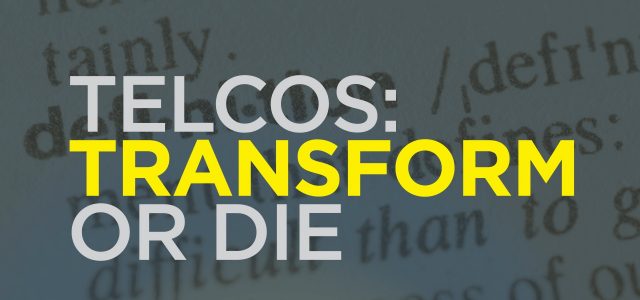‘Leading Digital Transformation’ is a weekly podcast series produced in collaboration between The Digital Transformation People and Rob Llewellyn digital transformation advisor and founder of CXO Transform.
During this series, Rob interviews experienced practitioners, authors and thought leaders whose stories and experiences provide valuable insights for digital transformation success.
In this episode, Rob is joined by Heidi Beets, a specialist in designing 𝙘𝙪𝙨𝙩𝙤𝙢𝙚𝙧-𝙘𝙚𝙣𝙩𝙧𝙞𝙘 organisations for sustainable 𝙜𝙧𝙤𝙬𝙩𝙝. As she says, “successful businesses don’t just happen, they are designed” and after 20 years working in Strategy, Design, Architecture & Accounting, Heidi delivers advisory, consulting and leadership services, helping organisations to connect their strategy to execution by using best practice and industry frameworks around enterprise architecture, organisational and service design and customer experience… She and her team I design with commerciality in mind, finding the sweet spot between strategic innovation and business optimisation for fast and sustainable growth.
You really need to reengineer how KPIs work or OKRs, so how do we actually reward people? What behaviours are we rewarding? How are we making sure that we’re focusing on the right outcomes so that we’re looking to managing strategic risks effectively and making sure that we’re not just looking at operational efficiency and getting stuff done, but we’re nurturing other parts of the business that are more aligned to what the customer cares about?
Listen here and read the full transcript below.
Transcript
Rob Llewellyn [00:00:22] Today, a lot of large organisations are experiencing flat growth, acquisition and in some cases bankruptcy. What they’ve done in the past to bring them success no longer works as it once did. And doing more of the same won’t bring them to where they need to be to remain in business for the next five, ten or twenty years. Companies of the future don’t happen by accident. They’re designed. One person helping design these companies in Australia is Heidi Beets. Let’s jump into the interview with Heidi and listen to her perspective on how organisations can create a new future for themselves.
Rob Llewellyn [00:01:04] Heidi, welcome.
Heidi Beets [00:01:06] Oh, hi, Rob. Thanks for having me.
Rob Llewellyn [00:01:07] Heidi, a lot of people talk about digital transformation. Is there a consistent understanding, a definition of what that actually means?
Heidi Beets [00:01:17] Well, a lot of the different stakeholders that I speak to have a very different understanding, depending on what their background is and what they’ve been exposed to previously. So I really try and drill down into what their term of reference is. A lot of people are most familiar with things like operational efficiency and continuous improvement in terms of transformation and for digital I keep coming up against-, I refer to it as always in context of digital channels for distribution or self-service and things like automated marketing. But where I’m trying to help change the narrative and there’s lots of other people out there doing the same, digital transformation to me is really distribution as well as looking at the engine room of the business, so how we look to automate through things like straight-through processing. So, not just the robotic process automation, but straight-through processing and also new value propositions. So that’s all underpinned by a digital platform. So that’s kind of the big banner of what it means for me, so I always try and figure out where people are at and then try and help them come to the realisation of missing pieces.
Rob Llewellyn [00:02:21] Yes. Interesting, isn’t it, Heidi? I think, you know, people kind of talk about digital transformation in the context of the area that they work in. So, for example, you’ll find marketing people, they’ll talk about digital transformation from a marketing perspective. But of course, it’s much bigger than that, isn’t it?
Heidi Beets [00:02:36] Definitely. So, I feel this being a connector role to be able to join those people together. So if you talk to process people, they realise it’s all about reengineering the processes and business process management. When you talk to technical people, they’re like it’s different functionality and different platforms that we are looking to implement or streamline and deduplicate. So design people are always going to come at it from, you know, what’s the functional use of this thing and how are we building it for best use? Yeah. So it’s really our job to bring those things together so that we’re all working towards one view of what the moving state of the future should look like.
Rob Llewellyn [00:03:12] So it’s kind of like an orchestra, isn’t it? You’ve got all these amazing players within the orchestra and it needs that individual to bring them all together to give that, that great transformation performance.
Heidi Beets [00:03:23] Most definitely. And I guess people like you and I have come from more diverse backgrounds. So we’ve been a Swiss Army knife kind of consultant or practitioner or leader. You can really help people to join those dots, because if you work in one functional area or several, it’s sometimes more difficult to see how these bits fit together because how would you know otherwise, unless if you’ve worked across a lot of different aspects of transformational change?
Rob Llewellyn [00:03:48] So, which emergent disciplines and practices are required for successful transformation, Heidi?
Heidi Beets [00:03:53] Good question. So I’ve come from more of a business architecture background more recently. And that’s really understanding how you work with the business to decompose the business strategy into executable chunks and then work together to figure out which business capabilities you need to be good at, great at or even stop doing to be able to achieve a strategic objective. Really get to the crux of a shared understanding of how work and value flow through the organisation. So that’s really one of the more elevated things that we’re saying in transformation. And that really dovetails into a broader enterprise architecture space, so that’s really helping bring the business technology and things like data architecture together to align like strategic intent with delivery. Then there’s also customer experience management and also service management and design so that’s looking more at orchestrating end-to-end ideal experiences into complex business systems. But then bringing it all together, I’ve been experimenting more with enterprise design concepts, so business design and enterprise design that is part of that movement’s growing globally. So that’s one to watch out for. And that’s really looking at how do we bring all the zoom-in and zoom-out together to be able to consider both and be able to move the dial congruently.
Rob Llewellyn [00:05:12] Heidi, you touched on customer experience. What’s your view on customer centricity in terms of transformation? There’s a lot of talk around customer-centricity, but what’s your view on it?
Heidi Beets [00:05:25] Yeah so, a lot of people talk about customer experience and customer-centricity interchangeably, I’ve found. I think customer-centricity is more of an incremental culture paradigm shift, so it’s really helping the organisation to be born data-driven and evidence-led, stay curious. And it’s really reshaping how you define value and measure success so all those organisational design aspects. And I guess it’s built into leadership. So it’s how you lead your staff and it’s your strategy. And I guess just to look at – I wanted to touch on what customer centricity to me, isn’t. For a lot of people talking about things like, you know, if I break it down to that rudimentary level, design posturing or innovation theatre. So attending a couple of days of design thinking course but keep going or delivering as they had already. And also I don’t know how many times now over the years I’ve seen these absolutely exquisite, gorgeous designs that never see the light of day and don’t actually get translated into customer and business value. So I just wanted to touch on what I think it is, but more importantly what it isn’t. So, it’s not ticking a box as a one-off. It’s not running one customer project in isolation. It is your strategy and it really spills through to – it’s not just customer-centricity in the end customer view. It’s really talks to the employee experience, the supply chain and also partners so that those aspects all need to work together. Depends on how you center your business around all of those objects and how they come together to create value.
Rob Llewellyn [00:06:57] And you just mentioned, Heidi, that, you know, some of the ideas that you come across really nicely presented, polished ideas, never see the light of day. Why do you think that is? Of course, it’s different in different organisations. But typically, what’s “something” that you find is commonly happening in organisations to stop these ideas seeing the light of day?
Heidi Beets [00:07:13] Yes. I’m seeing a few patterns with this, and through no malicious intent whatsoever, but it depends on your frame of reference when you’re trying to solve problems. So, when some people come in and do unstructured blue sky innovation thinking and they’re applying that to a continuous improvement incremental improvement problem, it doesn’t quite work, because you’ve got to leave constraints. So, by that I mean you’ve got business rules that you need to comply with or maybe need to challenge. You’ve also got things that regulators insist on that you can’t move the dial on. And then you’ve also got decisions to make around how much technical data are you willing to take on. How much pain are you willing to put your frontline staff through if there’re implementations that are so rapid that it’s eroding your core business? So there’s all of these considerations and that translation takes a very different skillset and mindset and that transition from think-feel-do and qualitative and quantitative research and intent in the customer experience design, when the rubber hits the road and you’re trying to implement that into a complex business system where humans as customers and humans as employees with all these extra restrictions around funding models, around control and standard accountability for leadership, it’s complicated. So you really need to start using tools like the service design canvasses to be able to thread through what’s happening to the customer and join up with what’s happening in the business. So you’ve got conscious decisions that you’re making rather than just saying, well, that’s too hard, we’ve got too many constraints, or we’ll come back to that later, because it’s sometimes so big that you can’t move the dial incrementally on it.
Rob Llewellyn [00:08:53] Heidi, leaders have been around for as long as organisations have. And of course, it’s a critical role within any organisation that harbours hopes of transformation. So what does transformation mean for the future of leadership?
Heidi Beets [00:09:07] Well, I think that a lot of larger organisations have got command-and-control style leadership, and it’s more aligned to how you manage a call centre in some instances, and that necessarily won’t lend itself nicely to where we’re looking to implement more creatives in design and looking to implement more algorithms, so we’re going to need different skill sets. And when you have more specialists to support these design and architecture functions and doing things like automation and radical transformation, you need to manage them in a different way. So it’s more about setting direction and supporting people and empowering them and trusting that you’ve got the right people with the right skill set. So it’s really about having the humility to tap into “what do we need” and take advisory on to understand what the gap is, because it’s not what you’ve already got in most cases, it’s you need something different. Otherwise, you’re going to get more of the same. So it’s really understanding which technical and which other kind of skills do we need and how do we nurture those so that we’re not having people without those skills directing how the work is going to be done down the track, because it doesn’t quite work.
Rob Llewellyn [00:10:19] So, of course, this requires a lot of change in the way leaders think. So what paradigm shifts in thinking are required to instigate meaningful and effective change?
Heidi Beets [00:10:31] Well, I really think transformation is about next-level change management. And I’m not talking about change management from the point of doing a push of things from a project out into operationalise value. I’m really talking about a cultural transformation which is enabled by digital and technology but not led by it. So that really starts lending itself more to things like those shifts to organisational psychology skill sets and organisational design expertise. So really linking organisational design and enterprise design to what’s happening in technology and you’re really ramping up your service delivery capability. So linking front and back office in ways that companies may haven’t had to over the years. And also with the future of work changes, there’s going to be requirements, we’re going to see more of a shift to things like requirements for neuroscientists and algorithm or model managers to make sure that those ethics applied so that the models aren’t biased. And we’re looking to have integrity in what we’re automating.
Rob Llewellyn [00:11:34] You know, Heidi, the words “culture” and “people” tend to be bandied around quite a lot when people talk about transformation. What are some things that we can do to ensure that we nurture a culture (because we’re not going to change it overnight) that we nurture a culture into one that’s going to help the organisation transform and evolve our people to create that new organisation? What are some things we can do?
Heidi Beets [00:11:59] We can’t truly have a cultural change without helping people connect to something greater than themselves with an individual or within a certain team. So you need to motivate and inspire people to lift out of their cost centre or what their leader might be trying to drive and really a greater-good approach and say, actually, it doesn’t matter about you or me in this. We’ve got companies going broke, they’re becoming bankrupt, they’re getting acquired, hostile takeovers, what are we willing to compromise on, to have relentless focus on customer and business value and we take our egos and ourselves out of it. So, it’s up to the leaders to set what that should look like and give them something bigger than the team or the business unit to connect to so that it should be obvious what the right thing to do is. It shouldn’t even be a conversation in some instances. So that is a different way to approach it and it’s quite a difficult thing to do. But also to back that up, you really need to reengineer how KPIs work or OKRs, so how do we actually reward people? What behaviours are we rewarding? How are we making sure that we’re focusing on the right outcomes so that we’re looking to managing strategic risks effectively and making sure that we’re not just looking at operational efficiency and getting stuff done, but we’re nurturing other parts of the business that are more aligned to what the customer cares about? So that shift in culture has to be backed up with how we measure and reward success. Otherwise, it just doesn’t stick.
Rob Llewellyn [00:13:33] My next question might build on what we’ve just been talking about. I don’t know yet! In your experience, what’s the biggest obstacle for large organisations to embrace transformation?
Heidi Beets [00:13:44] Okay. So I think change is happening so rapidly that at times it might be hard for leaders to fully comprehend. I mean, we’ve got day-to-day jobs. We’ve got the businesses running, but really hard to comprehend the actual impact of certain unprecedented strategic risks that are out there. So how do you quantify something that you’ve never seen before? How would you know what the impact was going to be when you’re trying to keep the lights on and keep the fires at bay? That’s really hard. So I think having an intimate awareness of both extreme operational efficiencies that you may have and making sure that you’re addressing funding those and also addressing the strategic risks. So by that I mean, where you’re likely to be disrupted is something that every executive should have on their must-do list. And I really think that the biggest barrier for that is transparency of having the information to understand where you’ve got these inefficiencies and risks, as well as trying to have the right skill sets in place so that you’ve got that strategic intelligence and you can understand and react to those signals of change in time to be able to react. So that will involve changes to how you fund things, the innovation, the improvement. It’s quite a difficult challenge, but it’s a conscious choice. So I think that side of it needs to be re-engineered as well. And I guess the lynchpin of it all is you need to have leaders that are empowered to be able to act. So large corporate successes and how everything that they’ve done to get them to where they are today, that’s actually their biggest risk now. And that’s a common thing that I’m seeing when I talk to people across the continent. And what companies have done for years doesn’t necessarily work in the same way. So we’re facing constant changing market conditions, increasing customer expectations and ever-increasing regulatory change so the bar’s continually lifted higher. And leaders will now, I guess, need more humility to be able to insist on getting the transparency, so investing in data, to know when these things are not going to plan and have an awareness as to what that new state of play might need to look like. So that really requires hiring the right skill sets to get them over the line, to be able to do what’s required to remain in business for the foreseeable future.
Rob Llewellyn [00:16:00] Heidi, I just want to touch on innovation with you. Now, we mentioned earlier on that, you know, some ideas never see the light of day. What’s your view on the way in which organisations are approaching innovation to enable them to create that new future?
Heidi Beets [00:16:16] I’m going to go back to the language. A lot of people, when they’re talking about complex problem solving for a complex business problem that they already have with products and services or market for customer segments that they already have today, they refer to that as innovation and that’s actually improvement. So even diagnosing the problems and opportunities correctly, so for me, innovation is planting lots of seeds, looking across what other people are doing in adjacent markets, locally, across the world and other technology advancements other companies that are emerging and looking for those changes that are happening, being tuned into that and being able to fund experimentation and not expect a return on investment. That’s probably the biggest confusion point that causes so much damage in that space. So we try and fund things like they’re an improvement and we want a return on investment in 12 months. And that’s not how it works. I like to think of it like a farmer as an innovation practitioner so they’re planting lots of seeds and then you’ve got a firefighter. So they’re putting out the fires and you’ve only got a limited set of resources, which is the water. You’re trying to grow the value, which are the trees. So you need to keep the fires at bay and nurture the seedlings to be able to grow the most value. So you need a balance of the two. And I don’t think people consistently understand the differences between one or the other.
Rob Llewellyn [00:17:41] Heidi, we could go on about this for hours. We’re going to have to wrap it up there. But listen, before you go, where can people go to learn more about what you’ve got to share on the subject or connect with you?
Heidi Beets [00:17:54] So if you can get me on LinkedIn, Heidi Beets on LinkedIn.
Rob Llewellyn [00:17:58] Excellent. And we’ll put a link to that in the show notes. Heidi, thank you so much for your time today.
Heidi Beets [00:18:04] Thanks, Rob. Really appreciate it.
Announcer: [00:18:07] We hope you enjoyed this episode of “Leading Digital Transformation” with Rob Llewellyn and The Digital Transformation People. Visit www.thedigitaltransformationpeople.com to secure the knowledge, talent and services you need for digital transformation success. To continue your journey as a certified transformation professional, visit www.RobLlewellyn.com. Be sure to subscribe to the podcast and follow us on Twitter @TheDigitalTP and @RobertLlewellyn
Article by channel:
Everything you need to know about Digital Transformation
The best articles, news and events direct to your inbox
Read more articles tagged: Featured, Innovation







